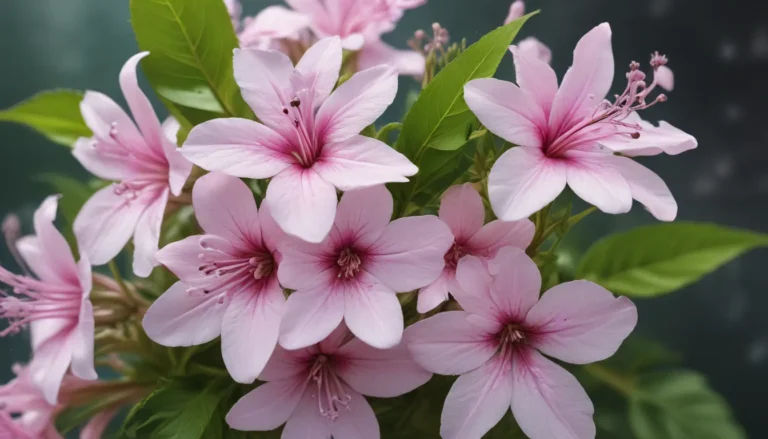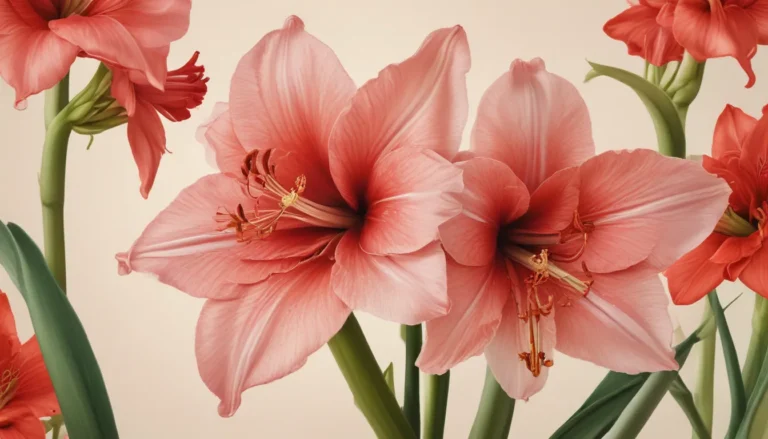The pictures we use in our articles might not show exactly what the words say. We choose these pictures to make you interested in reading more. The pictures work together with the words but don’t take their place. The words still tell you the important facts.
Are you ready to embark on a journey through the enchanting world of Cranesbills? Also known as Geranium, these delightful flowering plants are sure to capture your attention and spark your curiosity. With their vibrant colors and unique charm, Cranesbills are a favorite among gardeners and nature enthusiasts alike. In this article, we will uncover 13 captivating facts about Cranesbill that will leave you in awe. From its diverse species to its medicinal properties, Cranesbill is a plant that continues to surprise and delight. Let's dive in and explore the wonders of Cranesbill together.
Cranesbill: A Beauty to Behold
Cranesbill, scientifically known as Geranium, is a stunning flowering plant that belongs to the Geraniaceae family. Its vibrant colors and delicate petals add a touch of beauty to any garden or landscape, making it a captivating addition to outdoor spaces.
Exploring the Diversity of Cranesbill
Did you know that there are over 400 different species of Cranesbill? Each species boasts unique characteristics, from color variations to leaf shapes, making Cranesbill a fascinating plant to study and admire.
Unveiling the Origin of the Name “Cranesbill”
The name "Cranesbill" is derived from the shape of the plant's seed pod, which resembles the beak of a crane. This distinctive feature sets Cranesbill apart from other flowering plants and adds to its allure.
Thriving in Temperate Regions
Cranesbill is native to temperate regions worldwide, including Europe, Asia, and North America. It thrives in well-drained soil and can tolerate both sun and partial shade, making it adaptable to various climates.
Harnessing the Medicinal Properties of Cranesbill
Throughout history, Cranesbill has been valued for its medicinal properties, used to treat ailments such as diarrhea, inflammation, and respiratory issues. Today, extracts of Cranesbill are still utilized in herbal medicine for their healing properties.
A Natural Pest Repellent
One of the fascinating qualities of Cranesbill is its ability to repel pests. The plant produces a natural chemical compound that acts as a deterrent, keeping unwanted insects at bay and preserving the health of your garden.
A Haven for Butterflies
Cranesbill's vibrant colors and nectar-rich flowers make it a perfect choice for attracting butterflies to your garden. These beautiful creatures are irresistibly drawn to Cranesbill, adding a touch of magic to your outdoor space.
Low Maintenance, High Reward
Cranesbill is a relatively low-maintenance plant, ideal for both novice and experienced gardeners. It requires minimal watering and can withstand drought conditions, making it an easy and hassle-free addition to your garden.
Transforming Your Garden with Ground Cover
With its spreading growth habit and dense foliage, Cranesbill is often used as a ground cover plant. It forms a lush carpet of leaves and flowers, suppressing weed growth and enhancing the visual appeal of your garden.
Long-lasting Blooms to Brighten Your Summer
Cranesbill displays its beautiful flowers for an extended period, allowing you to enjoy their vibrant colors and delicate petals throughout the summer. This burst of color adds a lively touch to your garden landscape.
Creating Defined Borders and Edges
Thanks to its compact growth habit, Cranesbill is an excellent choice for borders and edges in your garden. It offers a structured and defined look, enhancing the overall aesthetics of your outdoor space.
Embracing the Fall Colors of Cranesbill
As the autumn season approaches, Cranesbill foliage undergoes a stunning transformation, turning shades of red, orange, and gold. This vibrant display of colors adds a touch of autumnal beauty to your garden.
Sharing the Magic: Easy Propagation of Cranesbill
If you want to expand your collection of Cranesbill plants, you're in luck! Cranesbill is easy to propagate through division or softwood cuttings, allowing you to multiply this captivating plant and share its beauty with others.
These 13 captivating facts about Cranesbill showcase the beauty, versatility, and unique qualities of this remarkable flowering plant. Whether you're a dedicated gardener or simply appreciate the wonders of nature, Cranesbill is a fantastic addition to any outdoor space.
Embracing the Wonders of Cranesbill
In conclusion, Cranesbill is a versatile and fascinating plant that holds a special place in the world of gardening. From its exquisite flowers to its medicinal properties, Cranesbill offers a wealth of benefits for both gardeners and nature enthusiasts. Whether you're seeking a striking addition to your landscape or exploring natural remedies, Cranesbill is a plant worth considering. Its rich history, diverse species, and captivating characteristics make it a topic of intrigue and exploration. Next time you encounter a Cranesbill plant, take a moment to appreciate its captivating beauty and the wonders it embodies.
Frequently Asked Questions
-
What is the origin of the name "cranesbill"?
The name "cranesbill" is inspired by the shape of the plant's seed heads, which resemble the beak of a crane. -
How can I cultivate Cranesbill plants in my garden?
To grow Cranesbill, choose a well-drained location with ample sunlight. Plant seeds in early spring or divide an existing plant. Maintain moist soil during germination and water regularly throughout the growing season. -
Are Cranesbill plants easy to care for?
Yes, Cranesbill plants are generally low-maintenance. They are drought-tolerant and do not require frequent fertilization. However, occasional pruning is beneficial to promote bushier growth and remove dead or damaged foliage. -
Are all Cranesbill species suitable for medicinal use?
While many Cranesbill species have medicinal properties, it's essential to research and identify the specific species before utilizing them for medicinal purposes. Some species may have toxic properties or limited medicinal value. -
Can Cranesbill serve as a natural insect repellent?
Yes, Cranesbill plants possess natural insect-repelling properties, which can help deter pests from your garden. Additionally, they attract beneficial insects like bees and butterflies, contributing to a healthier ecosystem.
Explore the Beauty of Cranesbill
Cranesbill's captivating allure and versatility make it a true gem in any garden. From its stunning colors to its healing properties, Cranesbill offers a myriad of delights for plant enthusiasts. If you're eager to delve deeper into the world of this fascinating plant, join us in exploring the astounding facts about Cranesbill that will leave you spellbound. Discover the secrets of Geranium phaeum, a unique species within the Cranesbill family, and unlock the mysteries that await your discovery. Dive into the wonder of Cranesbill and embrace the magic it brings to your garden.






